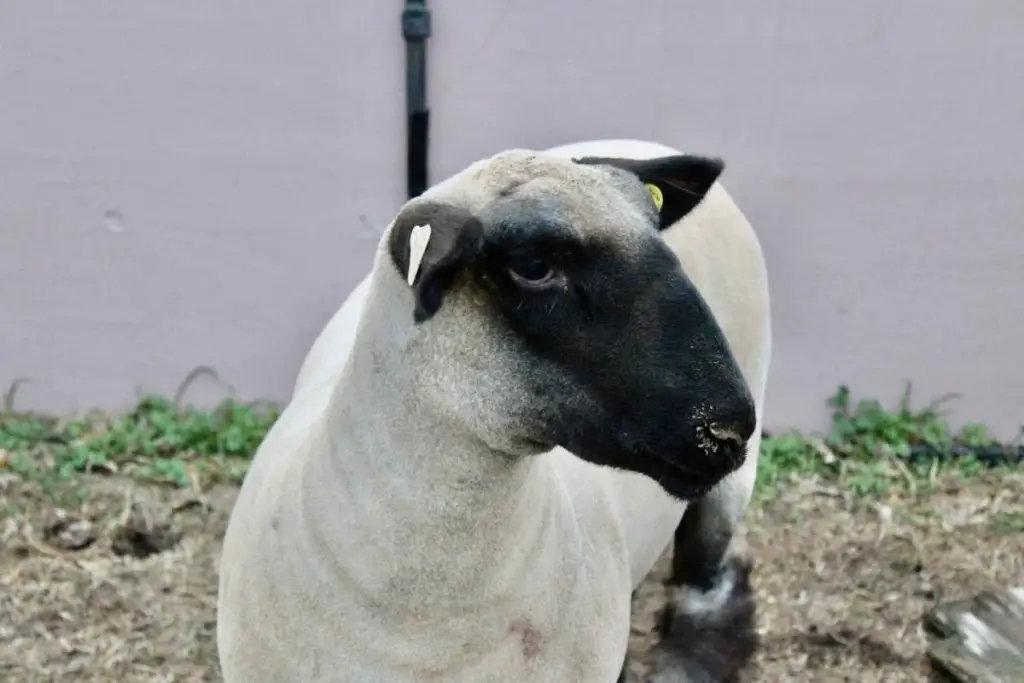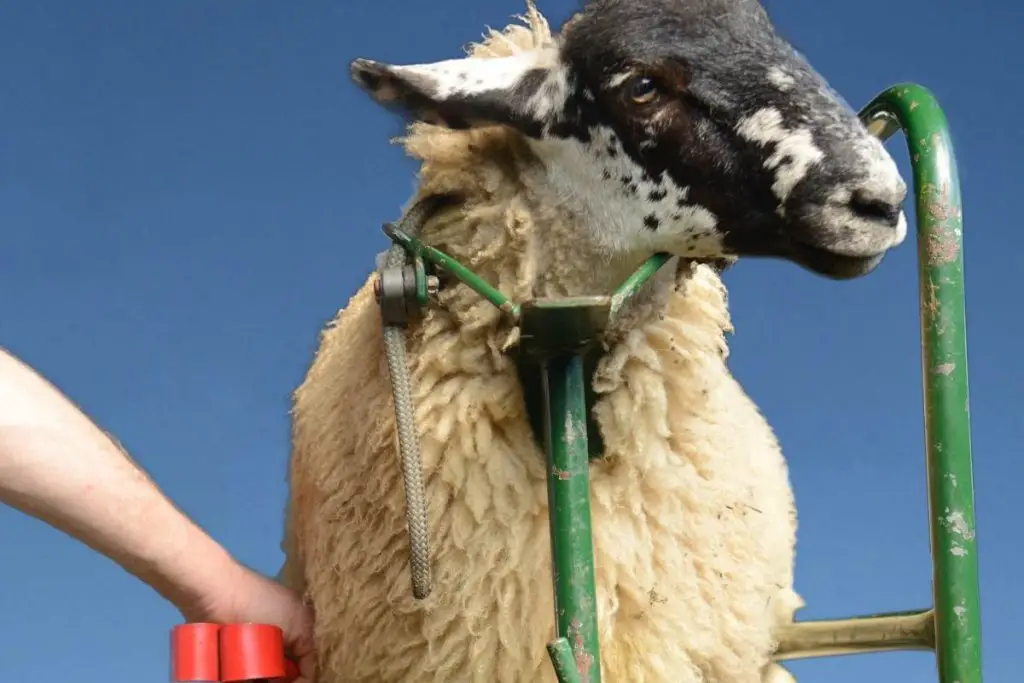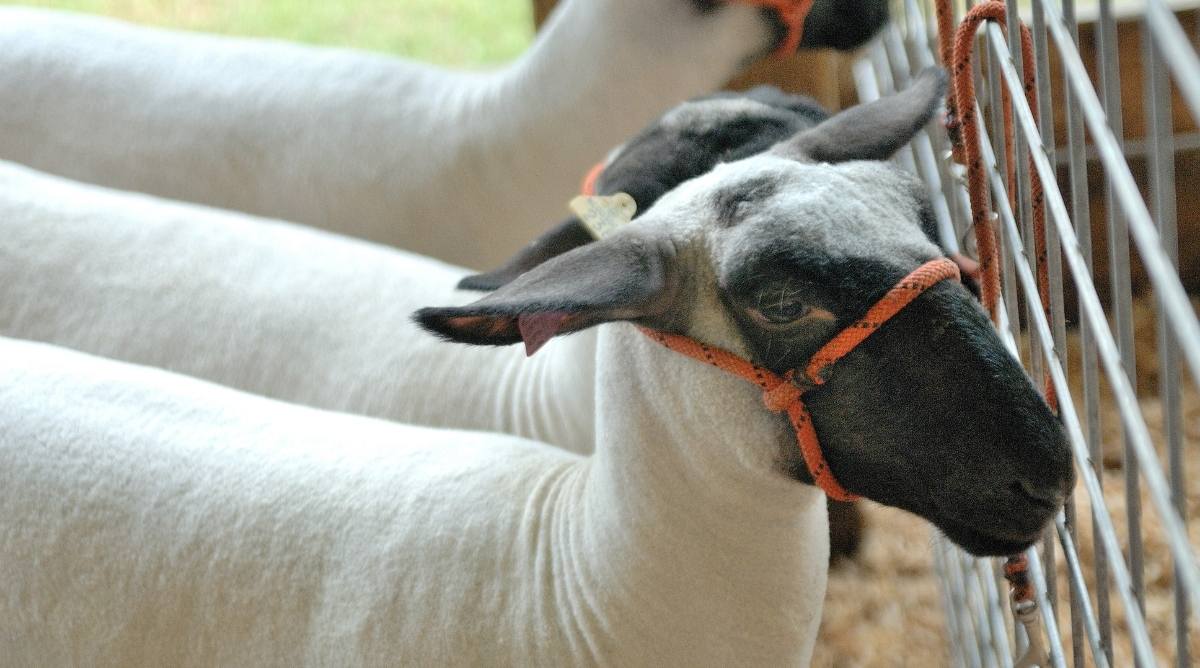Cleaning sheep involves securing the sheep, applying and lathering cleaning products carefully, and drying the wool completely. There are additional considerations if you're cleaning a sheep in order to show it.
Table of Contents
Why keep your sheep clean?

Keeping your sheep clean is important for general health, for maintaining high-quality wool, and for presenting your sheep at its best if you are showing it.
- General health: Sheep’s wool is susceptible to dirt, debris, grime, insects, and other contaminants that may affect their lungs and immune systems. Thoroughly clean the wool to reduce the risk of developing and spreading disease to other sheep or ewes.
- Sheep shows: Usually, thorough cleaning is done before showing sheep so they have the best chance to do well in the competition.
- Maintain high-quality wool: If you’re selling your sheep’s wool, you also want to make sure the wool stays high quality so you can get the best possible price for it. Without caring for your sheep’s wool, you may find it is damaged or stained when it comes time to clean it.
How to clean sheep (step-by-step guide)

Prepare the sheep
Avoid feeding your sheep 12 hours before cleaning them. If they are full right before cleaning and shearing, they may get uncomfortable and stressed out in the process.
If there are any visible objects (such as leaves and stems) that are stuck in your sheep’s wool, gently remove them before giving your sheep a bath. Work on any knots in the wool by applying lanolin oil to make the surface smoother.
Restrict its mobility
Get the sheep in a narrow pen. A large tub can work too, or any other option that can keep them restrained and avoid having them run off.
Do your best to keep the sheep off the ground during the cleaning process.
Apply cleaning products
Regular livestock soap can be used to wash the dirt and grime off the wool. Shampoo also works and can help the wool obtain a silky and shiny texture.
Wash off the product using a hose. Direct the water in a downward direction to ensure that the dirt is washed off as well. Get your fingers in between the wool fibers and try to comb as much dirt out of those surfaces as possible.
Rinse the soap out completely, as residues can lead to possible sheepskin irritation and clumping of the wool.
Dry the sheep
Blow drying your sheep is best. Get them dry quickly.
Air drying (letting them dry slowly on their own) is not advisable. The process can take too long and can encourage the growth of molds, mites, and other harmful things that can affect the overall health of the sheep.
How long before a show should you wash your sheep?
Wash your sheep seven days before a show to maximize the benefits of cleaning the wool.
By doing this, it makes it easier for you to present the sheep attractively or sell it.
Preventing wool damage
Sheep wool can get damaged as sheep go about their day-to-day lives.
Here are some tips on preventing wool damage:
- Place sheep pens strategically: Ideally, the area should have an abundance of grass and other greens to prevent too much dust from accumulating into the sheep’s wool.
- Build a sturdy shelter: Help sheep get as much shade as possible. Too much sun exposure can cause damage to the wool.
- Isolate sick sheep: Some diseases may lead to wool loss. Do your best to contain them.
- Keep them in pastures as much as possible: Pastured sheep usually have cleaner sheep fleece than barn sheep. Strike a balance between bringing them inside or outside.
- Pick bedding options carefully: Straw bedding keeps wool cleanest. Make sure it’s thick enough to cushion their entire bodies. Prepare thicker bedding during colder seasons.
- Don’t feed sheep from above: Avoid feeding you sheep from above because food can get caught in their wool. Instead, use feeding troughs.
- Check for parasites: Always check for worms, parasites, and flystrike. They can bring illnesses to the sheep that can affect the entire flock.

